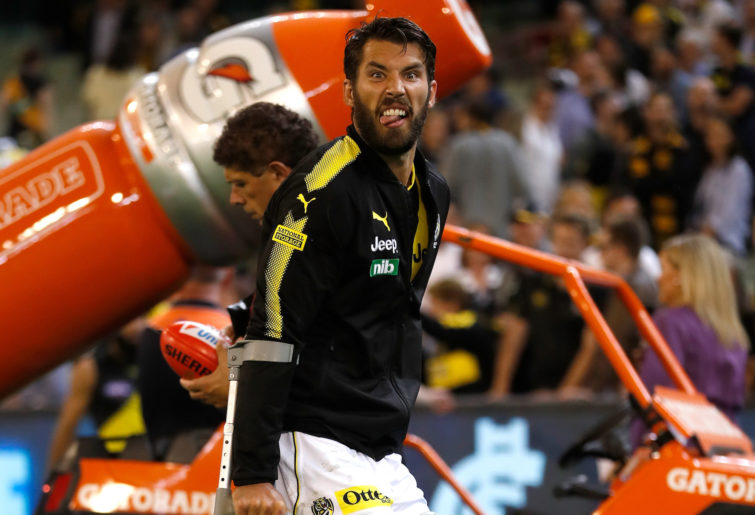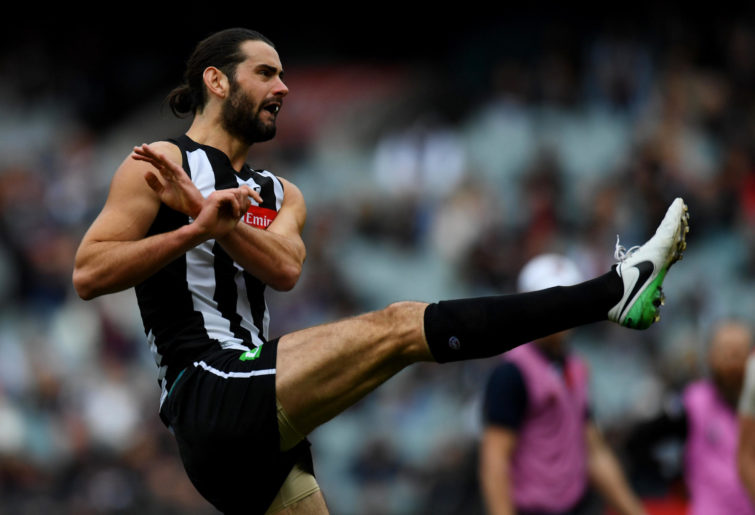It’s been two nights since the Pies notched their first win of the 2019 campaign against a fellow premiership fancy, but the implications of how they ran away 44-point winners could have a telling impact in the coming weeks.
Much has been made of whether Alex Rance’s absence was to blame for the Tigers disappointing showing, overshadowing another fascinating talking point to emerge from Thursday night’s contest.
But before we get to that, just in case you’ve spent the last nine days without power, internet connection or any Australian newspaper, last Thursday the country was suddenly thrown into abject disarray as five-time All Australian defender Alex Rance tragically succumbed to a knee injury in the battle-hardened trenches at the MCG’s Punt Road end.
It is without a doubt the single biggest tragedy mankind has laid its eyes on since a rather large ship ran into an iceberg on a frosty night back in 1912.
If you need to take a moment to process the news, please do. Word on the street is that offices around the country were understaffed last Monday morning, as thousands of workers took a long weekend to ease themselves into this new reality.

(Photo by Michael Willson/AFL Photos/Getty Images)
My view on the matter is quite simple. While I’m not disputing Rance’s importance to the Tigers’ set-up, the manner in which the Pies played on Thursday night would have nullified his impact regardless.
Same goes for Bachar Houli.
The Tigers’ defence has a heavy reliance on zone defending. Their ideal scenario being to block up the space inside their defensive 50 to force their opponents to kick the ball long down the line.
The decision to go down the line to a three vs three or even four vs four contest is a mini-win for the Tigers, as this is the most effective situation for Rance to intercept and launch a counter attack from halfback.
Even in his absence, the Tigers strength of defending as a group was demonstrated on the rare occasions when the Magpies midfield was forced to go down the line.
The likes of Dylan Grimes and Nick Vlastuin would compete in the same pack, with both able to either enforce a spoil to take the ball out of play, or intercept and launch an attack.
But Buckley came prepared.
Collingwood’s modus operandi was to deprive the Richmond back line of a chance to work as a unit through zone defence.
As soon as the Pies were able to clear their defensive 50, they were more than happy to be patient.
Chipping the ball meticulously across halfback, changing the angles to cut into the midfield or switching to the fat side of the ground to shift the Tigers defence.
The stats paint an incredible story. Collingwood winning the mark count by a remarkable 78-174, and of the 174 marks they took on the night, only 15 were contested.
Tom Langdon, Jack Crisp, Jordan Roughead and Jeremy Howe finished the night with a whopping 50 marks between them, almost three quarters of the Tigers total count.
However, Collingwood’s game-plan wasn’t purely designed to counter the Tigers defence.
They were able to execute this style of play that was a far cry from the centre corridor running machine which propelled them into last year’s grand final, because Buckley now has the key personnel to implement it.
The returning Darcy Moore has barely put a foot wrong in the first two games, and added with the shrewd acquisition of Jordan Roughead, the duo give the Magpies the sort of defensive height that was so desperately needed to match the Eagles’ talls in their grand final loss.
Not only that, but the Pies midfield boasts an array of gut-running wingmen.
Much is said and written about the Pies midfield brigade but the outside run of Steele Sidebottom, Chris Mayne and Tom Phillips is just as crucial as the class of say Scott Pendlebury, Dayne Beams and Adam Treloar.
Without the hard work of these outside midfielders to find space on the wing and switch from one side of the ground to the other, the back line would be pressed in and constantly under pressure without an easy outlet.
Even ruckman Brodie Grundy was able to assist in the transition, finding space on the wing in a manner which his opposite number Toby Nankervis just couldn’t emulate.

(AAP Image/Tracey Nearmy)
On the other side of the coin, this was the type of game plan which rendered the Tigers small- to medium-sized brigade relatively useless.
Richmond’s trademark throughout the last 24 months has been its manic pressure.
A ruthless ability to swarm forward with quick handball chains, grubber kicks and a level of intensity which saw the opposition under intense pressure.
But this style of play relies on one fundamental element which the Tigers were missing on Thursday night: tackling.
Despite having 164 more disposals, the Magpies doubled the Tigers tackle count, which read 33-60, with eight Richmond players failing to lay a single tackle on the night.
By keeping the ball off the ground, the Tigers’ fleet of medium-sized half backs and half forwards were forced onto the back foot.
For players like Daniel Rioli, Dan Butler, Jack Graham, Mav Weller and Jason Castagna to have an impact, they needed to change the dynamic of the game to a fast-paced handball fest.
And naturally, the amount of time spent shifting between either side of the ground as the Pies raffled the ball across half back paid its toll.
The Tigers’ defenders were isolated inside their defensive 50, caught in one-on-one contests and unable to defend as a unit – a recipe for disaster when trying to nullify the strength of Jordan De Goey or the height of Mason Cox.
Perhaps Thursday’s game might have been an early Christmas gift to the rest of the competition.
Buckley’s game plan forced the Tigers to defend man-to-man, deprived them of the football, and rendered their small-medium sized brigade ineffective.
It was truly an all-of-the-above approach.
What impact this will have on the Tigers opponents is yet to be seen.
But with GWS, Port Adelaide, Sydney and Melbourne to come, all of whom possess the ability to replicate Collingwood’s game plan, we won’t have to wait long for the answer.






























































































